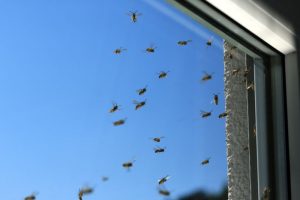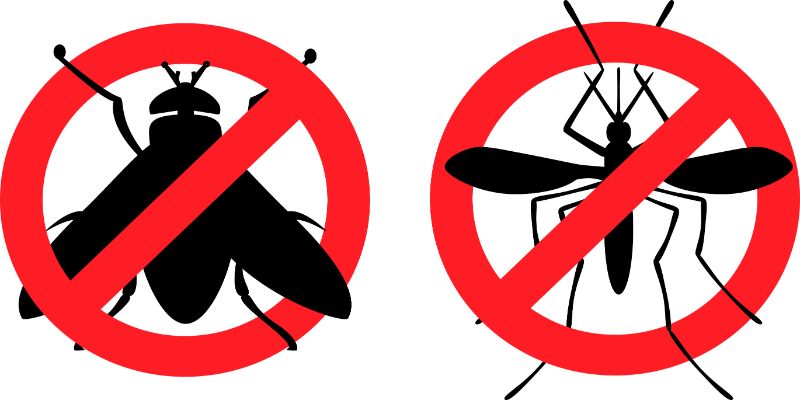Ultra Violet fly traps have not only been catching the eye of insects, but have also been attracting the attention of industry leaders across the globe as a safe, effective and chemical free solution to keeping annoying and dangerous insects away from our families and loved ones. They are far less invasive to people and pets compared to other pest control options, such as insecticide sprays, and they are fast becoming a favourite because they offer a natural, effective and chemical free solution to our insect problems.
Restaurant owners, school and nursing home managers, industry professionals and regular lovers of the outdoors have all benefited from the peace, comfort and ease of this chemical free, natural pest control technology.
Although there are certain situations which call for the use of insecticides, these products are often toxic, and they are most certainly not suitable for all situations. For instance, although they work great on the exterior surfaces of buildings and the exterior and interiors of dumpsters, they are not suitable for vast indoor and outdoor residential areas. For jobs like this, nothing beats the precision of a well-placed commercial pest control unit.
Since 1991, Ultra Violet Products has been one of Australia’s leaders in the Ultra Violet Industry, specialising in all things ultraviolet from UV water filtration systems to UV pest control. It is our mission to bring about awareness to the masses and to share the amazing benefits that UV technology has to offer.
What exactly is UV light?
Although not visible to the human eye, on the light spectrum, Ultraviolet (UV) light falls just a shade to the right of visible light and has a wavelength that ranges from 100 to 400 nanometers, depending on the spectrum.
The three spectrums of UV light and their uses are as follows:
UV-C: Commonly referred to as Germicidal Irradiation, UV-C light has the lowest wavelength on the spectrum at roughly 100-280 nanometers and is commonly used in the purification of air, water and surfaces. Learn more about UV for water purification here.
UVB: With a wavelength between 280-315 nanometers, UVB light is often used for tanning purposes.
UVA: Featuring the highest wavelength on the spectrum, UVA light—also referred to as black/blue light— clocks in at 315-400 nanometers and is commonly found in pest control. For UVA products and details, click here.
How does UVA light work to attract insects?
Take a look at any outdoor light source and chances are you’ll see insects buzzing around them. This is because all light sources emit UV light to a certain extent. Flying insects actively seek out these UV light sources, mistaking them for the sun’s rays.
The eye of the common housefly consists of hundreds of hexagonal lenses, which, unlike humans, allows them to register and see UV light.
Studies show that UV wavelengths between 350-370 nanometers have the best success rate when attracting insects, proving that a UVA light source is the most optimal.
How do electronic flycatchers work?
Electronic flycatchers typically consist of two main components: UV tube lights to attract the insects and an electrified grid or sticky pad known as the glueboard to kill/catch them.
The UV light is used as bait to attract the insect to the machine. Once the insects are in close proximity, a high voltage grid or electrified mesh located just in front of the UV lights electrocutes or “zaps” the insects dead. Some devices utilise glue boards to catch insects rather than electrocute them. Click here to take a look at our wide range of ultra violet pest control products.
Is UVA light safe for humans?
Yes. Take a look at the following scientifically proven facts surrounding UVA light. For additional information on safety, read more here.
- Outdoor bug zappers operate at around 345-370 nanometers, and scientists agree that under these conditions, they are completely harmless to humans.
- A specific European standard exists regarding UV insect traps. Any UV traps that fail to meet this regulation cannot legally be sold on the market.
- UVA insect traps are designed to emit the lowest maximum UVA output possible to attract insects efficiently.
I own a restaurant, where should I place my commercial fly zapper?
This is a great question. In order to get the most out of your natural pest control unit, a few things need to be considered.
- The UVP pest control products are all easily installed with a simple wall plug. You do not need an electrician to install or test the units.
- During a busy lunch or dinner rush, staff members have a tendency to unplug fly zappers to free up electrical outlets for other appliances. To prevent this, consider powering your device from an out-of-reach electrical socket.
- As other light sources will distract insects from your device, be sure to place your bug zapper away from bright windows and lights.
- Place your device between the point of entry or source of the insects and food. Inside and above the main door offers an optimal location as it catches insects the moment they enter the building
- Do not place your bug zapper above or close to food preparation stations. This will help reduce the risk of contamination.
Where else are bug zappers used?

Homes and holiday houses: Swarms of insects are a sure way to spoil a relaxing evening on the deck or on the cottage veranda. An outdoor bug zapper is a great way to take back control of your property and enjoy the outdoors again.
Restaurants and hotels: The last thing you want are customers complaining about insects buzzing around indoors, or ever worse, finding one floating in their soup. A commercial pest control unit works to ensure that guests are kept comfortable and your food remains contaminant free.
Campers and Caravans: A simple walk through any RV or trailer park will have you convinced these parks double as commercial pest control facilities. Bug zappers are everywhere, and as any outdoorsman will tell you, for good reason. The spring and summer are insect season and spending weeks or months in the woods without a bug zapper can leave you feeling unwelcome pretty quickly.
Schools and nursing homes: It is no secret that insects can be carriers of bacteria and disease and no one is more vulnerable than children and the elderly. A commercial pest control unit is a great way to ensure mosquitos and other flying pests stay occupied with a UV light trap rather than our loved ones.
I know insects are pests, but can they really harm my business?
This is a great question and is probably the one we hear most. Check out some of these shocking facts that can have repercussions on you and/or your business, such as:
- Increased likelihood for the spread of harmful pathogens and diseases including Salmonella and E. Coli
- Contaminated work surfaces, food and beverages
- General nuisance leading to a damaged business reputation
- Failure to meet the standards of health and safety legislation
- Painful bites from horseflies, mosquitoes bees and wasps.
Maintenance
Although bug zappers can be cleaned and maintained without the assistance of a professional, they are specialised pieces of equipment. Contact UVP for advice about parts.
UV tubes: although they can emit light for years, the effectiveness of UV bulbs can deteriorate rather quickly. Aim to change your UV tubes once a year, beginning in the spring, as this is when insects are most prevalent.
Glue Boards: the glue boards in your trapper need to be changed every 6 weeks to keep them trapping effectively.
Dirt and Dust: Be sure to clean your device regularly as dirt, dust and insect debris can block the UV output, minimising the effectiveness of your bug zapper. Make sure to unplug or switch off the wall mounted spur before doing any maintenance on your machine.
We, the team at UVP, hope you now have a better understanding of the benefits of UV light in relation to pest control. Please, if you have any questions, don’t hesitate to contact us here, for any additional inquiries you may have.

